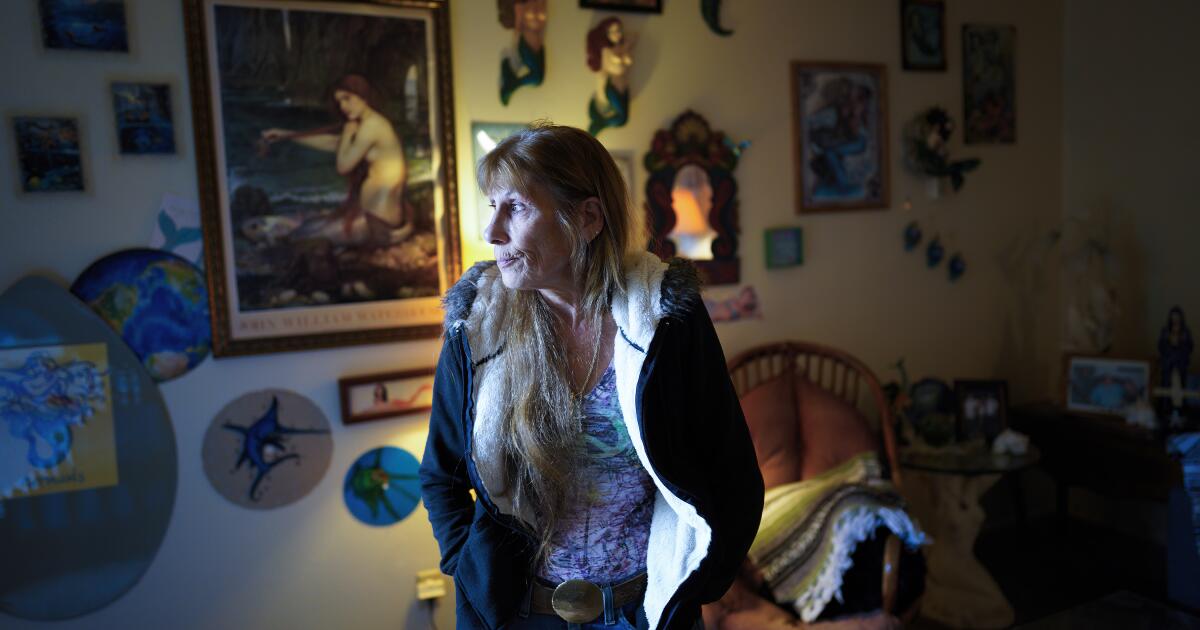
On a fall Saturday, a little before her 60th birthday, Allison Blanks got a letter.
It had four typed sentences. She read them in her El Cajon apartment, which she moved into almost two years ago after a long stretch living out of motels and a Chevrolet Spark.
“The Housing Authority of the County of San Diego has made a decision to terminate your participation in the Local Rental Subsidy Program,” the letter said. Starting February, “You will no longer receive benefits and will be responsible for paying the entire rent.”
The news wasn’t entirely a shock. Blanks remembered being told that the assistance was temporary.
Still, she started to shake.
As the region’s homelessness crisis grows, vouchers that help cover rent have emerged as a key tool for keeping people off the street. But the rising cost of housing, a lack of affordable homes and finite resources often leave leaders with limited options concerning who to aid.
Some programs are growing.
The county recently announced it was receiving nearly 50 new vouchers for young adults and families affected by the foster care system.
“This is great news as we’re trying to create our framework to really end homelessness,” Board of Supervisors Chair Nora Vargas said at a December press conference.
The Family Unification Program, which is federally funded, can help parents who are about to lose (or have already lost) their children primarily because they lack stable housing, officials said. Young adults at risk of homelessness may also be eligible if they’ve been in foster care.
The vouchers don’t expire for families, while individuals in their late teens or early 20s will generally see the assistance end after three years. A county spokesperson said agencies around the region are already using more than 230 of these.
Homeless veterans have similarly benefited.
Leaders have credited the Veterans Affairs Supportive Housing program with reducing homelessness among people who served in the military, although multiple factors, including a tough housing market, have recently kept hundreds of those vouchers from being used. Members of Congress are pushing local officials to boost participation.
Then there’s Section 8.
That name can conjure stereotypes of sprawling tenements, but the Federal Housing Choice Voucher program offers rental assistance that can be used in communities nationwide.
One problem? San Diego County estimates that getting a Section 8 voucher may take at least a decade. The average wait in the city of San Diego can be closer to 15 years.
“We need more,” Eugene Mitchell, board chair of the San Diego Housing Commission, said last year at a public meeting.
The Section 8 program is already the commission’s largest, with more than 17,200 people taking part citywide as of October, according to staffers.
A voucher’s value changes depending on the size and location of a given home, and the number of recipients could increase if leaders lowered how much each was worth.
Yet reducing the dollar amount could further concentrate low-income residents in poorer areas or simply make the vouchers worthless in expensive Southern California.
“We’re paying more for vouchers that people can use,” Commission Vice Chair Ryan Clumpner said from the dais, meaning “we don’t have as many to go around.”
As it stands, several groups tend to be prioritized, like homeless people with disabilities or the elderly.

Allison Blanks, 60, keeps a photo of a brother who recently died in her El Cajon apartment. On the same table are his reading glasses, a commemorative candle and one of his favorite chocolate bars.
(Nelvin C. Cepeda/The San Diego Union-Tribune)
Blanks, in El Cajon, tried applying for more help.
She got another letter from the county in December. It said Blanks is on a wait list — she thinks it’s Section 8, although the paperwork doesn’t specify — but no vouchers were immediately available.
Having an annual income of almost $31,000 meant she actually made too much for someone living alone, the letter said. Others were in far worse shape.
Blanks is a cashier at a Speedway convenience store. A pay stub shows she makes $15.91 an hour, which shakes out to around $2,500 a month. She said rent is $1,550, meaning she’ll soon have less than $1,000 for everything else: taxes, food, medicine, gas, insurance, the works. Blanks hopes to find a second job cleaning houses.
She looked around her one-bedroom apartment on a recent Wednesday. Shelves were lined with mermaid statues. Photos of her three children hung from the wall. A brother recently died, and Blanks had placed his reading glasses next to a commemorative candle.
She’d put everything in storage the last time she was homeless. Blanks wondered if she was headed there again.
“I’m not planning for the future, just day by day,” she said in an interview. “I’m terrified.”
The county’s Local Rental Subsidy Program should pay most of Blanks’ rent through January.
The voucher was only meant to last two years. However, the first letter didn’t mention the built-in time limit, saying only that the “reason for this termination” was “limitations on program funding.”
Tim McClain, a county spokesperson, said future letters will be re-written to “better reflect” that a voucher was ending because the “maximum amount of assistance months” had been reached.
In many cases, participants were ultimately connected to other aid, McClain wrote in an email.
One hundred and fifty-seven households were taking part in the program as of mid-December, he said. Around 28 will hit the limit in the next six months.




